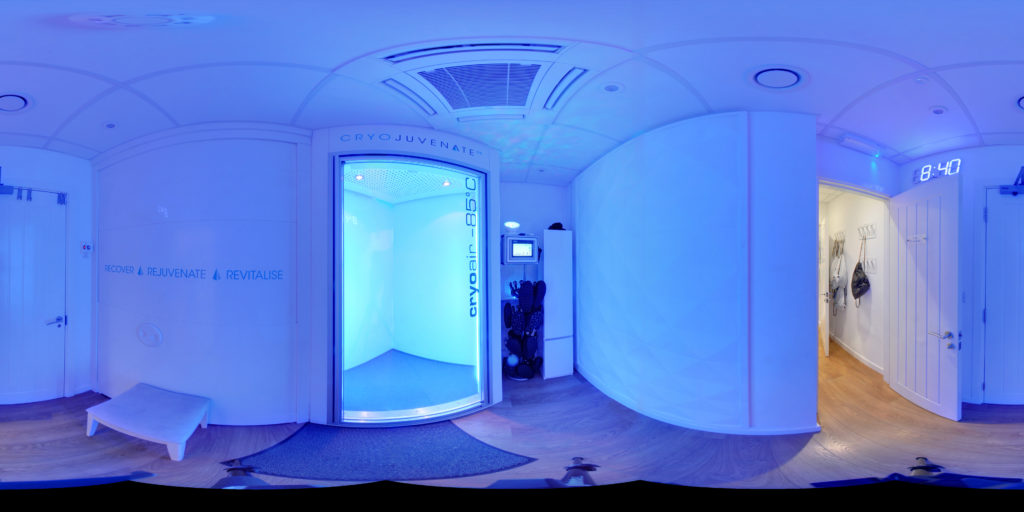How Cryotherapy can help to ease the symptoms of eczema

Eczema is a general term used for rash-like conditions wherein the skin becomes inflamed, itchy, rough, cracks, and may also form blisters. It’s among the most common skin conditions and affects 31.6 million people in the US, the prevalence of which peaks in early childhood.
Even though it is not contagious, the majority of individuals may have eczema for the rest of their lives; flare-ups only happen sporadically, and patients must deal with the symptoms for several weeks even after it is treated. There is still no cure for this condition, although there are a lot of treatments that could ease its symptoms.
Among the usual treatments are oral medication, ointments, and antibiotics. However, these treatments do not always work and may even cause unwanted side effects. But there is a rising solution to this problem: cryotherapy.
Eczema: Types, Triggers, Manifestations, and Treatments
Before determining whether cryotherapy is the ideal treatment for eczema-prone skin, it is important to have a deeper understanding of the condition first by knowing the different types of eczema, their triggers, and how each of them manifests on the skin. It’s also important to know existing treatments or remedies for this skin condition.
Types of eczema
There are seven types of this skin condition, and it’s possible to experience more than one of them at the same time. The most common type is atopic dermatitis, which causes flare-ups, dryness, and itchy skin. It is prevalent among small children, but can still manifest at any age. Other types are:
Contact dermatitis is also known as allergic contact dermatitis. It is caused by allergens such as nickels, pollen, and insecticides. Substances that enter the body (e.g. food, medicine, etc) may also trigger this type of eczema. Contact dermatitis causes skin irritation, blistering, drying, thickening, and cracking.
Neurodermatitis is characterized by chronic itching or scaling typically on the neck, wrists, forearms, legs, or groin area. Tight clothing, bug bites, and other factors that irritate the skin can trigger this condition.
Dyshidrotic eczema causes itchy blisters on the fingers, palms, and soles. The actual cause of this type is unknown, but its triggers may include allergies, stress, and frequently moist or sweaty hands and feet.
Nummular dermatitis – also known as discoid eczema, manifests in the form of circular, itchy, and oozing lesions scattered on the arms, legs, torso, and arms. Dry conditions, prolonged hot showers, and harsh skin care products may trigger nummular dermatitis.
Seborrheic dermatitis – mainly affects the scalp, causing it to dry out and produce stubborn dandruff. It also affects oily areas of the body such as the upper back, nose, and face. While its cause is still unknown, a possible trigger could be the excess oil in the skin.
Stasis dermatitis – occurs in people with poor blood circulation, usually those over the age of 50. It mostly affects the feet or lower legs, with symptoms including ankle swelling, speckles of discoloration, itching, scaling, dryness, and a heavy feeling after standing or sitting for a long time.
Treatments for symptoms of eczema
As mentioned earlier, there is no cure for eczema. Still, there are loads of treatments that can ease the symptoms of this skin condition — and many more are under development. Some eczema treatments are:
Over-the-counter medication – can be bought without a doctor’s prescription. This remedy reduces itching, redness, irritation, rash, and flare symptoms.
Antihistamines – can be bought with or without a doctor’s prescription. It helps curb inflammation and itchiness, as well as helps people sleep since some antihistamines contain sedatives.
Antibiotics – needs a doctor’s prescription. It is given when symptoms of eczema occur along with a bacterial skin infection
Topical corticosteroid creams and ointments – applied directly on the affected area and relieve the symptoms of eczema such as itchiness and flare-ups. Topical steroids are among the most common ointments given to eczema patients to treat inflammation, reduce redness, and make the skin less itchy.
Phototherapy – also known as light therapy, this treatment involves being exposed to UVA or UVB waves to reduce itch and inflammation. Red light therapy, for example, has been documented to reduce skin lesions and allergic reactions when used with a simple hot water bath.
Topical Steroid Withdrawal
As mentioned, topical steroids are among the most used treatments given to people with eczema. However, long-term use of this medication may lead to skin redness and a burning sensation worse than the original condition.
Such an effect may force an eczema patient to stop using topical steroids. In the days after they stop using this treatment, a person with eczema will feel potentially debilitating withdrawal symptoms of what is known as Topical Steroid Withdrawal (TSW). These symptoms include:
- A burning sensation
- Shedding or flaking of the skin
- Redness and swelling of affected areas
- The emergence of pus-filled bumps
- Wrinkling or thinning of the skin

Using Cryotherapy to relieve symptoms of Eczema
Cryotherapy, also known as cold therapy, is a form of treatment in which the patient’s body is exposed to freezing or near-freezing temperatures. This minimally invasive procedure is mostly used to help athletes recover from injuries.
Healthcare professionals also use it to treat some forms of cancer (cryosurgery) and various skin conditions. The latter includes easing symptoms of eczema.
In cryotherapy, the surface of the skin is cooled for three to five minutes inside a chamber, or the use of localised (targeted) cryotherapy is also used for more isolated . This reduces interior inflammation by constricting blood vessels in the body — thereby increasing the blood flow and improving antioxidant levels to reduce skin inflammation and redness.
Cold therapy is somewhat of a new kind of treatment for eczema, so people might still be skeptical of its effectiveness. However, recent studies have shown positive results so far.
Studies
A 2008 study published in JAMA Dermatology found that cold therapy “clearly has a steroid-sparing effect with additional statistically and clinically significant improvements in pruritus and sleep disturbances.”
Another research offers the same result, stating that a cryotherapy device may help ease itching in patients with mild to moderate eczema. Learn more about how cryotherapy is a safe treatment for painful itchy skin here
But like other remedies for this skin condition, people with symptoms of eczema should still proceed with caution before undergoing cryotherapy. Understanding the type of eczema and its severity, on top of consulting a dermatologist or medical expert, is important to determine if cold therapy is the right treatment to ease the symptoms of this skin condition.
For more information book a complimentary consultation with one of our qualified cryotherapy therapists at Cryojuvenate here
Click here to learn more
References
Photodermatology Photoimmunology & Photomedicine. 2016 Jan. Lombardi, G., Ziemann, E., & Banfi, G. (2017, May 2).
Whole-body cryotherapy in athletes: From therapy to stimulation. an updated review of the literature. Frontiers in physiology. Retrieved October 20, 2022, from https://www.ncbi.nlm.nih.gov/pmc/articles/PMC5411446/ Klimenko T, Ahvenainen S, Karvonen S.
Whole-Body Cryotherapy in Atopic Dermatitis. Arch Dermatol. 2008;144(6):806–808. doi:10.1001/archderm.144.6.806. Lee EH, Lee HJ, Park KD, Lee WJ.
Effect of a new cryotherapy device on an itchy sensation in patients with mild atopic dermatitis. J Cosmet Dermatol. Published online February 3, 2021. doi: 10.1111/jocd.13975.






